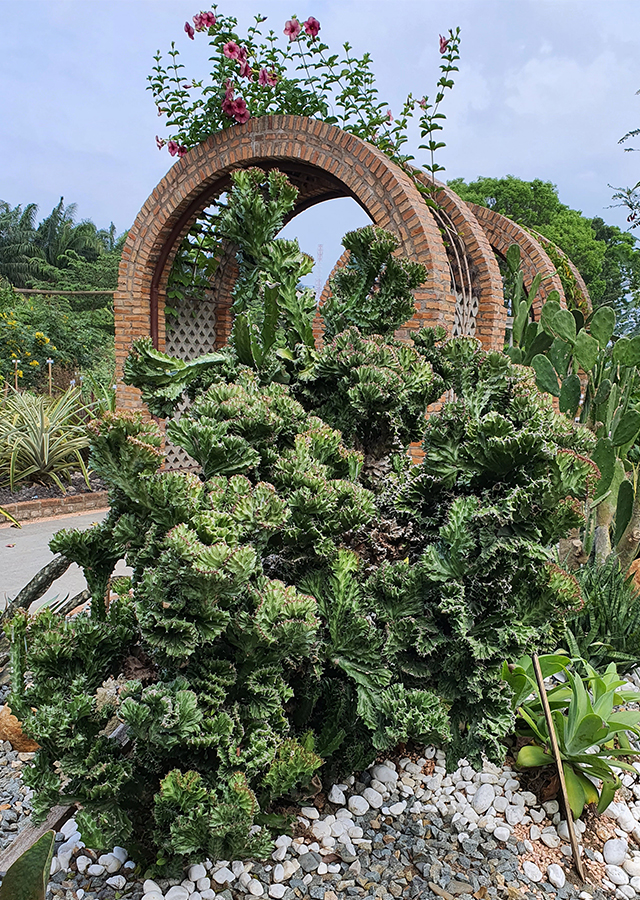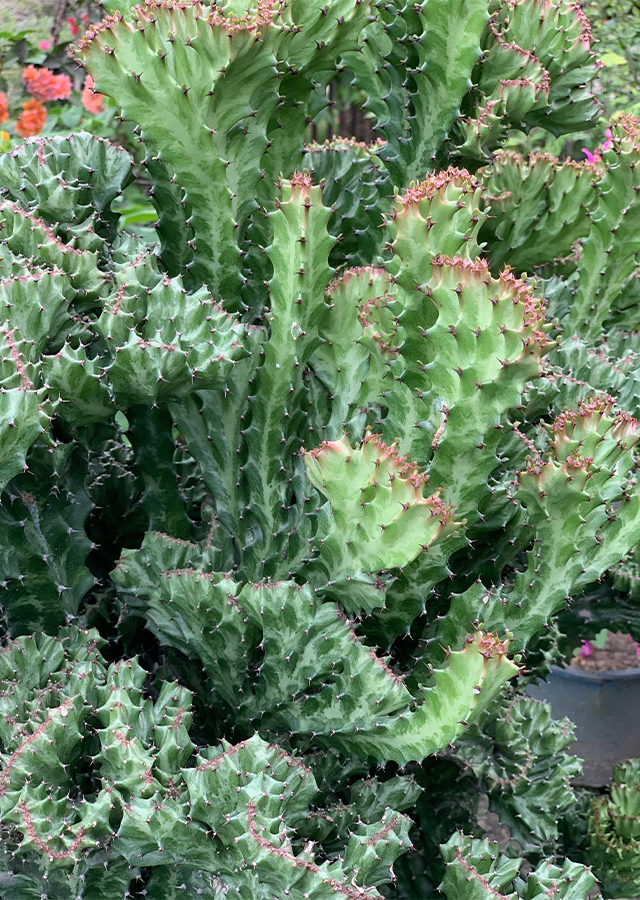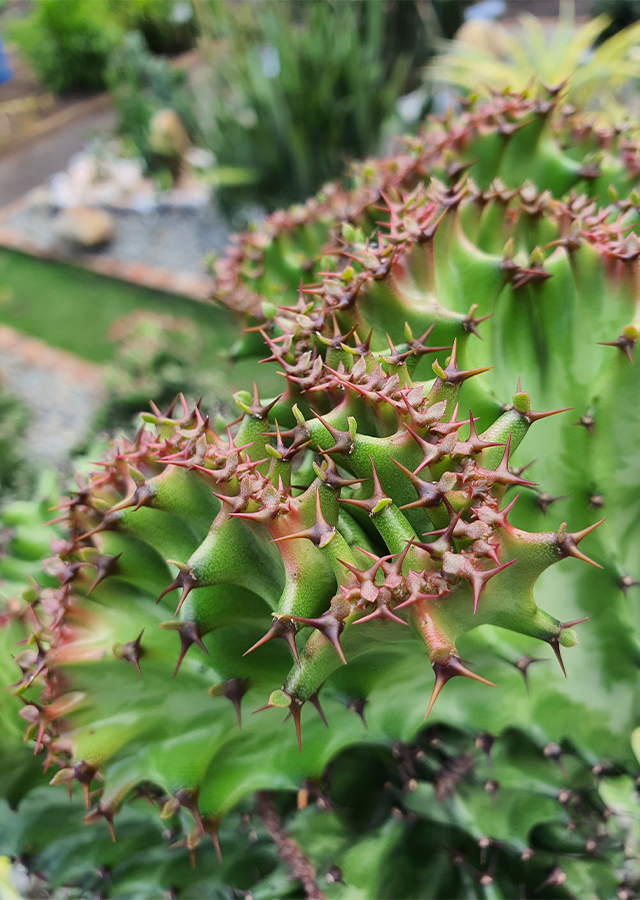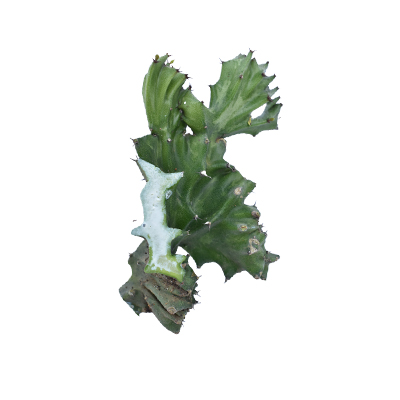Malayan Spurge Tree
Euphorbia antiquorum L.
Euphorbiaceae
Location in our garden
Principal



Synonym
Euphorbia mayuranathanii Croizat
Tithymalus antiquorus (L.) Moench
Habitus
Succulent. A spiny plant that can grow to be 6 - 9 meters tall. Characterized by ascending, tufted branches
Part Used
Leaves
Roots
Sap
Stem
Growing Requirements
Full Sunshine
Drought Resistant
Habitat
Forest
Rocky Areas
Shrublands
Overview
The plant is common in Southern India and Southeast Asia. In tropical and subtropical regions, the plant is typically planted as an ornamental and fence plant, while in temperate zones, it is planted as an indoor plant. Malayan spurge tree is also traditionally used as an ailment for a variety of conditions, sweet food, and fish poison.
Vernacular Names
Sudu-sudu, susudu (Indonesia and Malaysia), chan bat day (Cambodia), lep nguak (Laos), kalam-phak, khia phaa, salatdai paa (Thailand)
Agroecology
Malayan spurge tree can be found at elevations of up to 800 meters in dry, open, evergreen forests, scrubby vegetation, rocky limestone hills, and sandy soils.
Morphology
- Stems - green, succulent, branching, and spiny.
- Leaves - obovate-spathulate or subrhomboid; cuneate to attenuate at base; rounded to emarginate at apex; fall off early.
- Flowers - 1-7 cyathia with 5 pale yellow glands; peduncle pale green; anthers dark red.
Cultivation
Can be easily cultivated through root cutting.
Chemical Constituents
Diterpenes and Triterpenoids such as Euphane and Tirucallane.
Traditional Medicinal Uses
In Java, the plant young twigs are consumed as sweet after properly boiled, soaked in water, and covered in sugar.
Malayan spurge tree latex is consumed as an emetic, purgative, and diuretic whilst also applied externally to cure various skin diseases such as swelling, boil, etc.
The latex, dried heartwood, and fresh stem also can be used to treat toothache.
The latex may also be used to treat rheumatic after being mixed with oil, and also to treat earache and asthma
In Cambodia, the dried heartwood is also used to treat dysentery and as a febrifuge, whilst in India, the plant is used to treat edema and nerve disease.
The plant latex also may also be used as a fish poison.
Part Used
Reference Sources
Kemboi, D., Peter, X., Langat, M. and Tembu, J., 2020. A Review of the Ethnomedicinal Uses, Biological Activities, and Triterpenoids of Euphorbia Species. Molecules, 25(17), p.4019.
Thin, N.N. 1999. Euphorbia antiquorum L. In: de Padua, L.S. Bunyapraphatsara, N. and Lemmens, R.H.M.J. (Editor ): Plant Resources of South-East Asia No 12(1). Medicinal and poisonous plants 1. Backhuys Publishers, Leiden, the Netherlands. pp 266-267.
Tran, C.L., Dao, T.B.N., Tran, T.N., Mai, D.T., Tran, T.M.D., Tran, N.M.A., Dang, V.S., Vo, T.X., Duong, T.H. and Sichaem, J., 2021. Alpha-Glucosidase Inhibitory Diterpenes from Euphorbia antiquorum Growing in Vietnam. Molecules, 26(8), p.2257.
Tropical Plants Database, Ken Fern. tropical.theferns.info. 2021-10-25.



